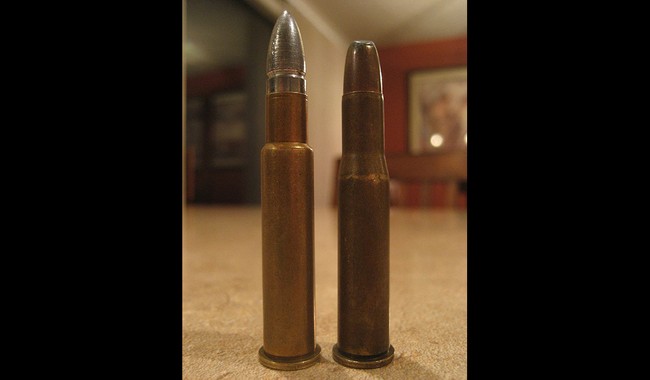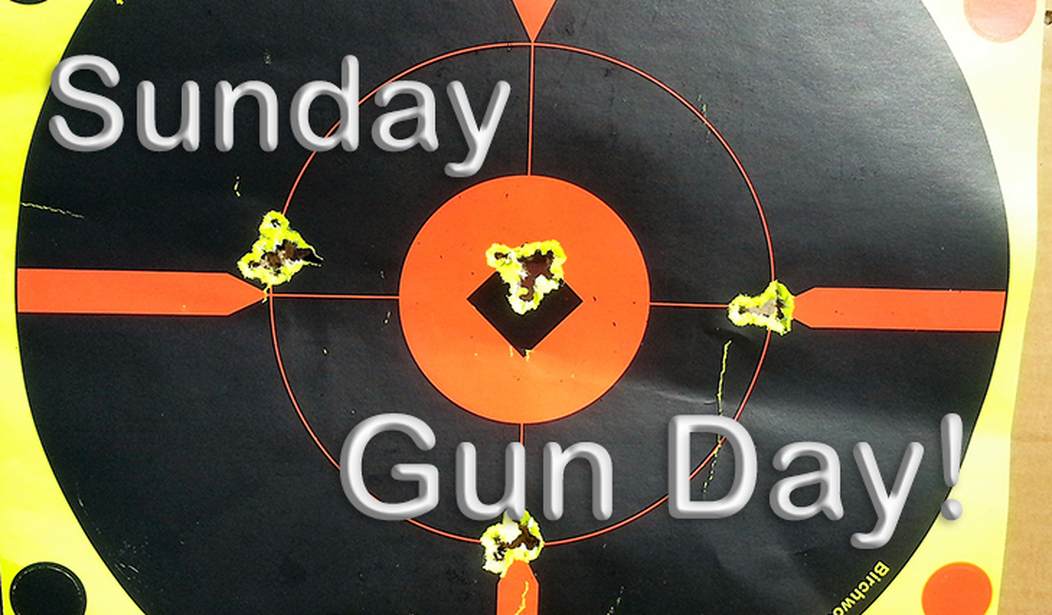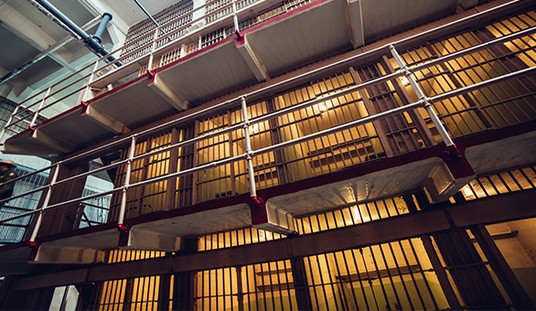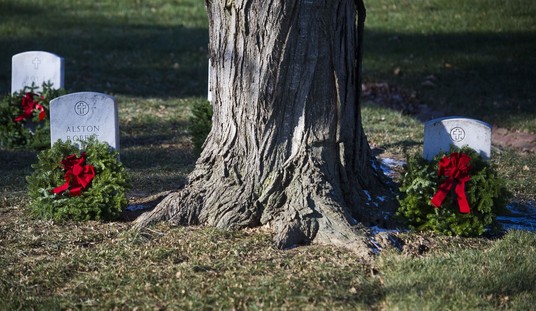Almost as soon as the modern-style brass rifle cartridge entered the scene in the mid-19th century, American shooters began messing around with them. A wildcat cartridge is, of course, a custom cartridge that is not commercially produced, usually designed to provide some added power or to fit some other unique need.
As the 19th century gave way to the 20th, wildcatting was in full swing in the United States. Then, on May 25, 1903, in Granville, New York, was born one Parker Otto “P.O.” Ackley, who in time would become one of the county’s greatest custom rifle builders and who would redefine what it meant to be a wildcat cartridge developer; Ackley, while an innovative and imaginative gunsmith, was also fortunate enough to live in a time before the current insanity over firearms.
The Man
Ackley developed an interest in working on guns in his youth, but it was not until after he sold the New York family farm and bought a gunsmith shop in Roseburg, Oregon, in 1936, that he turned professional. Only a few short years later he was interrupted by the Second World War, during which time he worked at the Ogden Ordnance Depot in Utah, developing a repair program that was successful enough that the Army turned it into a permanent arsenal refurbishing installation.
In 1945, with the war over, P.O. repaired to the small town of Trinidad, Colorado, to open a gunsmith and custom rifle shop and eventually help found the gunsmithing school that is now part of the Trinidad State Junior College.
During those post-war years, he also wrote extensively on rifles and shooting, serving on the staffs of both Guns & Ammo and Shooting Times magazines, as well as authoring several books, most notably his Handbook for Shooters and Reloaders series -- and it is as helpful today as it was when published.
But it was his work in rifle building and cartridge development that excelled far beyond most of his peers.
The Cartridges
Ackley did a lot of experimenting on rifles and cartridges, and was not above testing guns to destruction. One of his more notorious experiments involved a .378 Weatherby case necked down to .22 caliber, which in its appellation he coined a phrase I am fond of using myself: The .22 Eargesplitten Loudenboomer Magnum. His stated goal with this round was to break the 5,000fps mark, but his fastest load only made 4,600fps(!), making it one of his few failures. This round was apparently developed at the urging of Bob Hutton of Guns & Ammo, making it highly likely that this was no more than a publicity stunt.
Still, most of Ackley’s wildcats were eminently practical. His general rule for his “improved” cartridges was to fire-form a standard case out to a sharper shoulder, usually 40 degrees, increasing case volume somewhat while still allowing the use of the standard round. The .30-06 Ackley Improved, for example, approximates the performance of the .300 Holland & Holland Magnum, while retaining the versatility that the ubiquitous .30-06 round provides.
Ackley was the first wildcatter to experiment with .17 caliber cartridges. One of those experiments was the .17 Flintstone Super Eyebunger, which was based on the .22-250 case necked down and blown out. Australian shooter Bill Hambly-Clark Jr. used a 50-inch test barrel to hit almost 4,800fps with this round, which likely makes it the highest velocity ever achieved in a rifle barrel of any sort.

- .17 Ackley Hornet, a .22 Ackley Hornet necked down to .17 caliber (4.5 mm)
- .17 Ackley Bee, a .218 Improved Bee necked down to .17 caliber (4.5 mm)
- .22 Ackley Improved Hornet, an improved .22 Hornet
- .218 Ackley Improved Bee, an improved .218 Bee
- .219 Zipper Improved, an improved .219 Zipper
- .22/.30-30 Ackley Improved, a .30-30 Ackley Improved necked down to .22 caliber (5.56 mm)
- .22-250 Ackley Improved, an improved .22-250 Remington
- .223 Ackley Improved, an improved .223 Remington
- .224 Belted Express, formed from .30-06 brass.
- .228 Ackley Magnum, an improved 7×57mm Mauser necked down to .228 caliber (5.8 mm
- 6mm AR Improved / 6mm AR Turbo, an improved 6mm AR (itself a necked-down 6.5mm Grendel).
- 6mm/.30-30 Improved, a .30-30 Ackley Improved necked down to 6 mm (.243)
- .243 Ackley Improved, an improved .243 Winchester
- .25 Ackley Krag, a .30-40 Krag necked down to .25 caliber (6.2 mm)
- .25-06 Ackley improved, an improved .25-06 Remington with a 40-degree angled shoulder
- .25 Ackley Krag Short, a slightly shortened .25 Ackley Krag
- .250-3000 Ackley Improved, an improved .250-3000 Savage
- .257 Ackley Improved, an improved .257 Roberts
- .260 Ackley Improved, an improved .260 Remington
- .270 Winchester Ackley Improved, an improved .270 Winchester.
- 7×57mm Mauser Ackley Improved, an improved version of the 7×57mm Mauser cartridge with 40-degree shoulder.
- .280 Remington Ackley Improved, an improved version of the .280 Remington cartridge with 40-degree shoulder.
- .30-30 Ackley Improved, an improved .30-30 Winchester
- .30-06 Ackley Improved, an improved .30-06 Springfield
- .30 Ackley Magnum No. 1 and No. 2 short, based on the Holland & Holland belted magnum, the No. 2 version designed to fit in standard length actions (.30-06 class)
- .303 Ackley Improved, an improved version of the .303 British Mark VII service cartridge
- .338-06 Ackley Improved, an improved .338-06 A-Square (which is a .30-06 necked up to .338 caliber)
- .348 Ackley improved (which is a .348 Winchester) .348 Ackley improved gets about 200 feet a second more velocity over the standard.
- .35 Ackley Magnum No. 1 and No. 2 short, based on the .30 Ackley Magnum cases; there is also an Improved version of the No. 2.
- .450 Ackley Magnum, based on .375 H&H Magnum necked up to .458
- .475 Ackley Magnum, based on a .375 H&H Magnum necked up to .475 (12 mm)
But while Ackley was fond of wringing a little extra performance out of standard cartridges, he insisted on designing his wildcats to allow the use of standard factory rounds. For example, a rifle chambered for the .30-06 Ackley Improved will safely chamber and fire standard .30-06 rounds, in so doing fire-forming the cases to the Improved specification.
He was not, however, a fan of belted magnums. “Of course,” he was quoted as saying, “these big ones make more noise and they would be highly efficient if you could scare animals to death.”
The Guns
P.O. Ackley built many custom rifles, every one of them a singular piece, normally made on order for a specific customer. Ackley used a wide variety of actions, including the Winchester Model 70, the Interarms Mark X 98 Mauser, the Sako Vixen and Tikka actions, the Pattern 14 and 17 Enfield actions, the Ruger #1 single shot, and many others. He did left-hand conversions of the Model 70 and presumably other bolt guns (the Model 70 is the only example I have found, but that does not mean he didn’t do others).
Ackley’s custom rifles were known as excellent, hand-made, hand-fitted arms, made to order, and fitted to the individual shooter. He used solid actions and good wood. A P.O. Ackley rifle is an heirloom piece, one that should be passed on through the generations.
In my own career, I have had the distinct privilege of handling and firing precisely one P.O. Ackley rifle, many years ago (1987, if memory serves) at a gun club in Virginia when the Army had me working out there. The piece in question was built on an FN 98 Mauser action, with a 24” barrel for the standard .30-06 and a beautiful dark walnut stock with a gorgeous figure. The rifle, according to the owner, was glass-bedded with a free-floated barrel and a Timney trigger.
The rifle’s owner had mounted a low-powered (the exact specs escape me at this distance in time) Leupold variable scope. He showed me a couple of sub-MOA groups he had just shot with the rifle and, to my surprise, offered to let me shoot it.
I fired 3 three-shot groups. The stock was a tad short for me, but I managed to hold all nine shots within about an inch- and-a-quarter, which I will say was not too bad for a rifle I was unfamiliar with. I am sure some action work had been done, as the bolt ran very smoothly even for the usually fine FN action, and the Timney trigger broke very cleanly at a crisp five pounds or so, slightly on the heavy side for my preference but not excessively so.
Being an impoverished Second Lieutenant at the time, I did not bother asking what a rifle like that would cost. Suffice it to say that even in those innocent times it was obvious that an Ackley custom rifle would occupy a place of status in any gun rack. That is as true today as it was when P.O. was still cranking out fine guns.
The Legacy
Ackley once famously said of his competitors, “I have no quarrel with the man who has a lower price. He knows better than anyone else what his product is worth.” He promised and delivered a premium product, and was fortunate to live in a time when it was easier for a man to set up and run his business affairs as best suited him. He built fine guns and sold them for a fine price. What with all the plastics and polymers modern guns wear these days, one wonders how big a market he’d find today, but it is encouraging to note that Ackley rifles still command a pretty good chunk of folding money – if you can find an owner willing to part with one.
Parker Otto Ackley went to his reward on August 23rd, 1989, in Salt Lake City, having made a far greater-than-average mark on the American rifle shooting scene. On his passing, Ackley’s good friend and colleague Colonel Charles Askins said, “With a total interest in the shooting game, with a dedication and a devotion to rifles and their loads, the man had given countless hours, money, and effort to the betterment of the existing American family of rifle cartridges.The debt of the shooters of this country to Parker Ackley is a major one.”
One could bend a keyboard for months and not come up with a more fitting epitaph for the marvelous Mr. Ackley.














